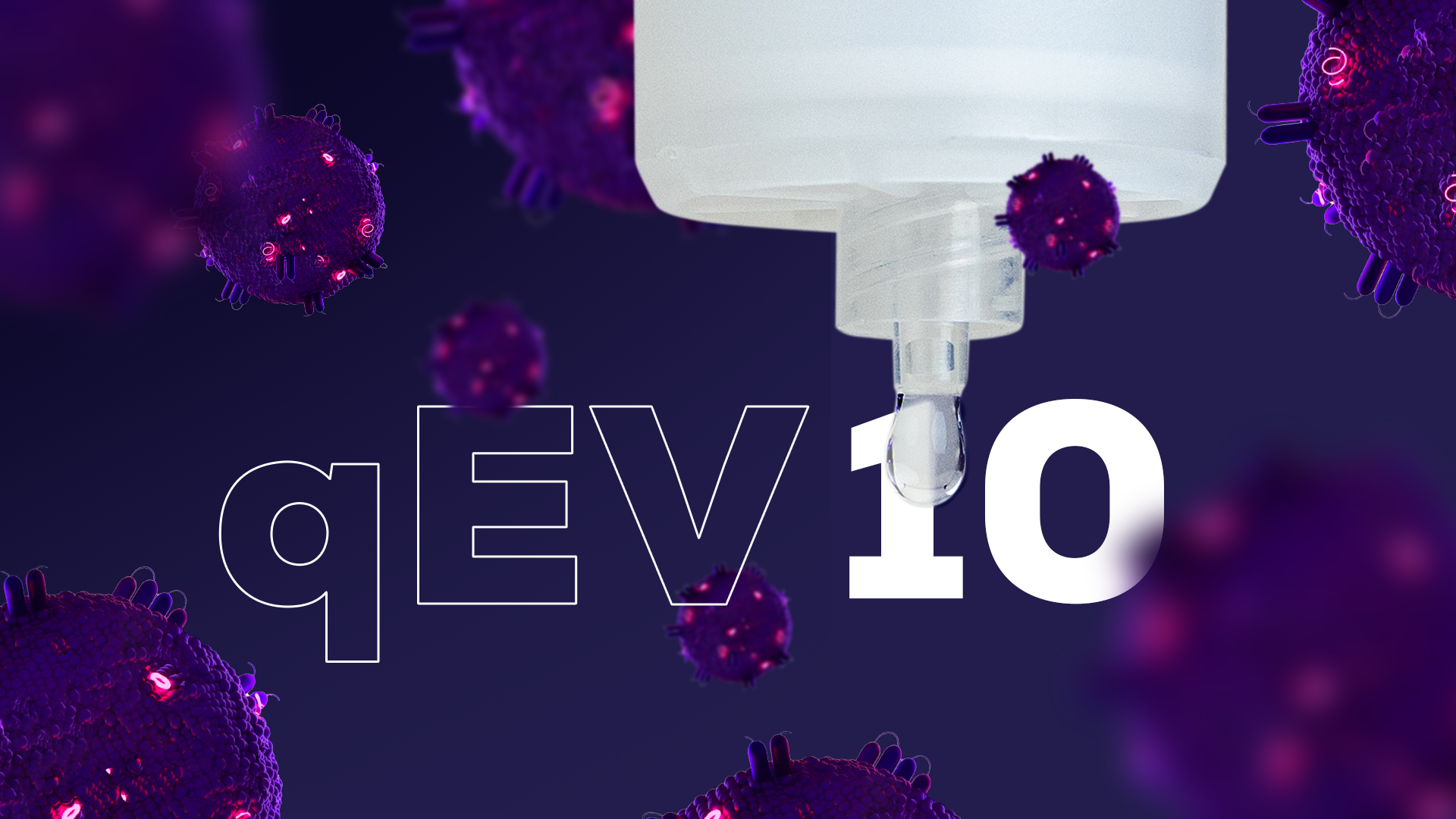The Exoid is a powerful instrument in the world of nanoparticle research. Utilising Tunable Resistive Pulse Sensing (TRPS) technology, the Exoid performs single-particle measurements, preventing data loss and enhancing comparisons between samples, when compared with other methods.
You may have some questions about how and why the Exoid would best suit your organisation, so let's go through some of them together.
What particle types can be measured with the Exoid?
The Exoid is capable of quantifying and characterising samples containing a variety of nanoparticles between 40 nm to >11 µm. This may include nanoparticles such as EVs, liposomes & lipid nanoparticles (LNPs), viruses & virus-like particles, and more.
Extracellular vesicles:
EVs are lipid bilayer packages produced and released from a cell via a range of mechanisms. There are many types of EVs, such as exosomes, microvesicles, and oncosomes, which are defined by their biogenesis.
EV size and concentration measurements are not only informative for scientists, but they are also expected parameters that should be reported in EV research publications. EV size is a fundamental characteristic that verifies the size range of EVs isolated, while EV concentration determines dosing for functional studies, for example. Zeta potential is another EV characteristic that can be measured with the Exoid, examined when studying disease/pathological changes, and other factors such as storage.1,2
Liposomes and lipid nanoparticles (LNPs):
Liposomes and the more complex LNPs, such as solid lipid nanoparticles and nanostructured lipid carriers, can be analysed using TRPS. This has been shown both in the literature3 and through our own in-house data.
Related: See high-resolution lipid nanoparticle measurements here
The Exoid is a powerful tool for detecting even small changes in the size of LNPs, such as those from fresh to freeze-thawed mRNA-loaded LNPs (Figure 1). This is particularly important in the identification of aggregates and other signs of sub-optimal stability. Recording and monitoring the size, concentration and zeta potential of LNPs is not just valuable for development, but for nanomedicine regulatory compliance.

Viruses and virus-like particles:
Experimental viral studies are often defined by their dosage – a parameter the Exoid can quantify through concentration measurements. In vitro studies often use the term "multiplicity of infection” when referring to the number of viral particles that are added to each cell in a cell culture. However, in vivo studies lack this dosing quantification, preventing the level of viral exposure from being investigated. To overcome this hurdle, a precise concentration of virions in the sample must be measured – enter TRPS.
Researchers can use TRPS to obtain accurate viral titres and viral size distributions.4,5 Researchers have also used TRPS to determine the concentration of viral particles in environmental samples6, and to measure the size, concentration and zeta potential of viral-like proteins.7
Whole bacteria and bacterial EVs:
The EVs produced by bacteria are frequently measured using TRPS, and so too are the size and concentration of bacteria themselves.8,9 This offers a much more accurate concentration measurement compared to optical density measurements, as individual bacteria are counted rather than making an estimate. Critically, TRPS also allows for the sizing of the bacteria, which can give important information about the viability and state of the bacteria.
And more!
While TRPS is predominantly used for analysing cell-derived or therapeutic particles, its application has expanded into other research areas. For instance, in microfluidics research, a study utilised TRPS to measure carboxylate-modified fluorescent polystyrene submicrometer particles, allowing for a more precise determination of their position within a microchannel.10 When comparing different analytical techniques for nanoplastic measurement, TRPS was uniquely able to discern particle sizes that eluded many other methods. These instances, although exceptions, underscore the versatility of TRPS beyond its conventional uses.11
What particle characteristics can the Exoid measure?
The Exoid is capable of measuring size and concentration concurrently, or size and zeta potential concurrently. Particle size and concentration can be measured for particles in the size range of 40 nm to >11 µm, while zeta potential can be measured alongside size for particles in the range of 40 – 2000 nm.
Why choose the Exoid over other techniques?
TRPS is a single-particle measurement technique which, compared to ensemble techniques, provides superior resolution and data collection capabilities. While ensemble techniques – like Dynamic Light Scattering (DLS) and Nanoparticle Tracking Analysis (NTA) for particle sizing, and Electrophoretic Light Scattering (ELS)/Phase Analysis Light Scattering (PALS) for zeta potential – estimate what is going on at a population level, they do not measure individual particles. This leads to substantial data loss and limits your ability to compare your samples in-depth (Figure 2).

Got questions? Get in touch now to learn more about the Exoid and how it could serve your core research facility.
If your research facility is looking for a versatile instrument to characterise nanoparticles, the Exoid is your answer. The Exoid will not only improve the quality of your research in terms of resolution and reproducibility but can be employed to study many different nanoparticles of interest, leading to a wider breadth of research outputs.
Building your case for an Exoid? Download the brochure here










